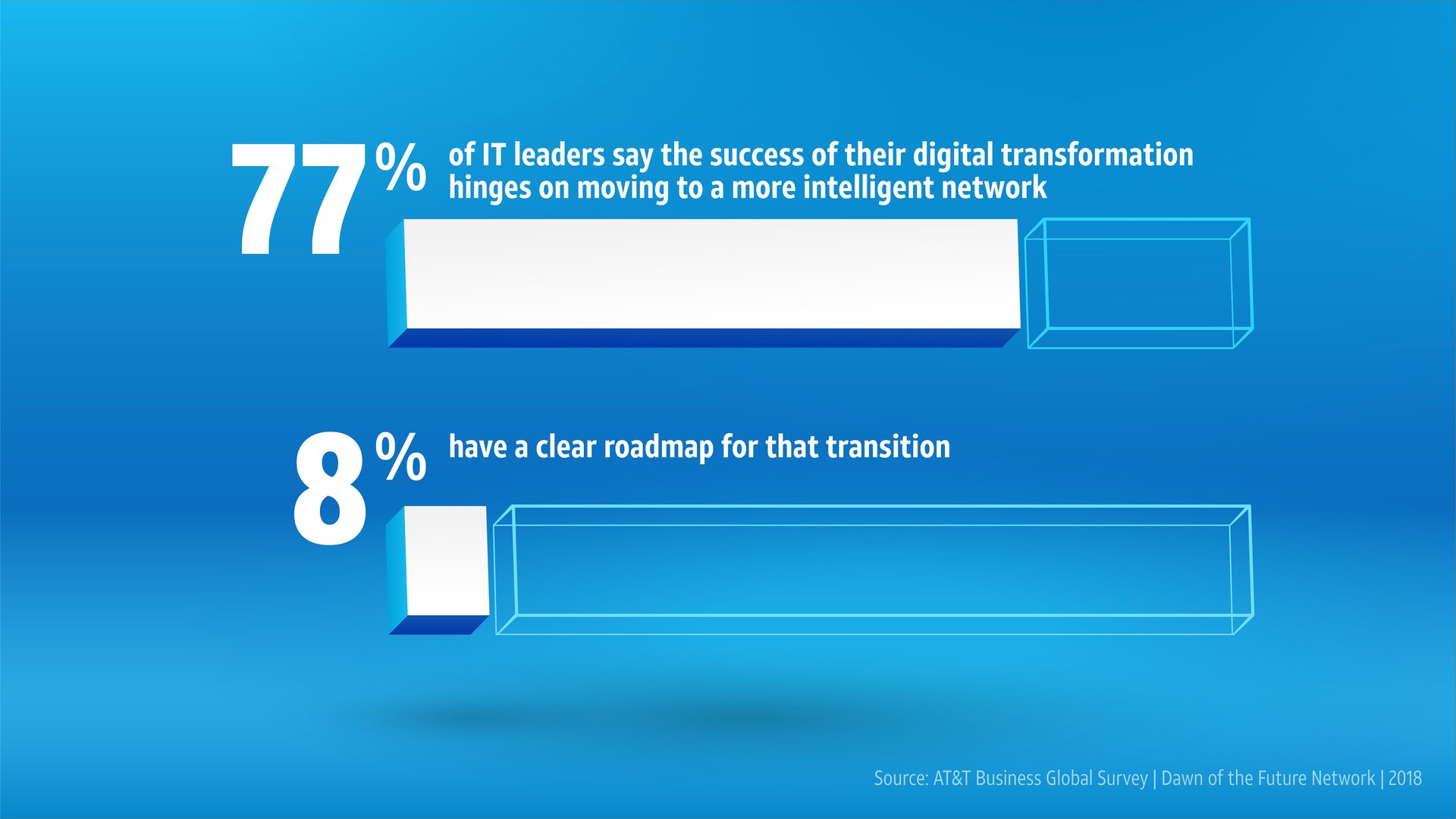Why growing companies are looking to the network of the future
Outdated network infrastructure can be paralyzing for growing midsize organizations that are eager to capitalize on emerging technologies, boost output, and expand their geographic footprint. Determining the best way to update your systems without the right information, however, can be equally challenging.


Outdated network infrastructure can be paralyzing for growing midsize organizations that are eager to capitalize on emerging technologies, boost output, and expand their geographic footprint. Determining the best way to update your systems without the right information, however, can be equally challenging.
As shown in the AT&T Business Global Survey above, 77% of IT leaders understand that the success of digital transformation depends on their network’s migration to more intelligent technologies. Yet, only a handful (8%) have actually developed a roadmap to guide their transition. Without a strategy in place, businesses may find themselves experiencing insufficient bandwidth and inadequate connectivity across office locations: Signs that are symptomatic of a looming tipping point—network productivity that has slowed or, worse, stopped completely.
With insights from AT&T Business, we outline the signals to watch and proactive solutions to deploy when your midsize business is eager to grow.
Three signs it’s time to consider network virtualization
What are the biggest indicators that your midsize company is approaching the tipping point and ready for the next stage of growth? These three signals are early warnings it’s time to reevaluate your networking system:
🔍 Your business has run off the same router for seven years.
🔍 Your IT team is overwhelmed by mounting bandwidth demands and security concerns.
🔍 Your company leadership is unsure how your current midsize tech stack will evolve over the next six months.
Three steps to modernize your network
If the above symptoms sound familiar, it may be time to upgrade to the network of the future. AT&T Business has an intelligent, edge-to-edge approach to networking that gives companies comprehensive control over all running applications. It also supports cloud migration and robust data storage and allows businesses to move away from multiple vendors toward a single, hosted solution.
For a smooth migration to a modernized network, midsize organizations need to develop a strategic vision and long-term plan. AT&T Business suggests the following steps to introduce a virtualized network:
💻 Perform an audit of your existing system.
💻 Decide whether to migrate networks gradually, all at once, or to use a hybrid system.
💻 Balance in-house and external resources.
In a constantly evolving technology landscape, flexibility equals competitive advantage. Midsize businesses in growth mode can’t afford to let a lagging network drag down productivity or obstruct output and should instead use this tipping point to propel their growth to the next level. While SD-WAN is the capstone of forward-looking software-centric networks, AT&T Business has other efficiency-boosting solutions in their Internet and Networking portfolio that provide stronger application, performance, and reliability. Networking should be simple and customizable for any company, and with the speed and scalability of SD-WAN, it can be.